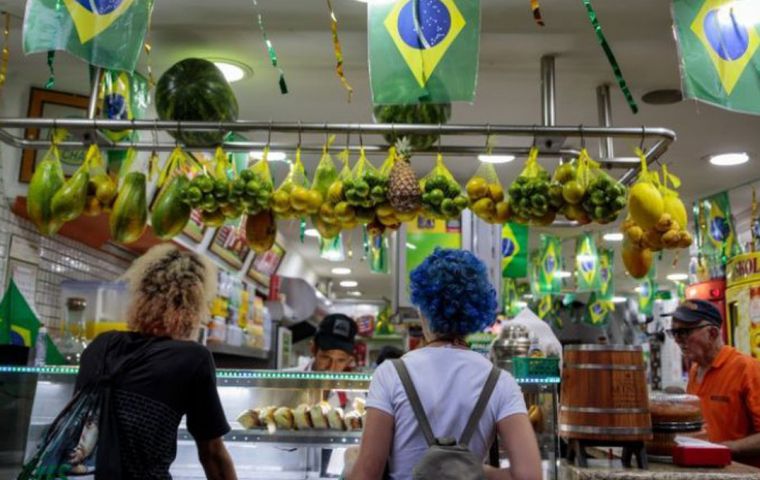MercoPress. South Atlantic News Agency
Brazil's inflation outlook rises to 3%, spiked by food prices, Focus survey
 It is the first time since March that the central bank's regular 'FOCUS' survey of around 100 economists has pegged inflation this year at 3%
It is the first time since March that the central bank's regular 'FOCUS' survey of around 100 economists has pegged inflation this year at 3% Brazil's 2020 inflation outlook rose to 3%, a central bank survey showed on Monday, the 11th week in a row it has risen as a recent spike in food prices continues to intensify short-term inflation pressures.
It is the first time since March that the central bank's regular 'FOCUS' survey of around 100 economists has pegged inflation this year at 3%, although that remains well below the bank's official 2020 goal of 4%.
The survey also showed that this trend could force the central bank to tighten policy more than previously expected. Economists now see the bank's benchmark Selic rate ending next year at 2.75%, up from 2.50% last week.
The central bank is widely expected to keep the Selic rate on hold at a record low 2.00% later this week. The 'FOCUS' survey showed the average 2021 inflation outlook ticking up to 3.1% from 3%, again still below the bank's 3.75% target.
The economic outlook brightened, the survey showed, with an average forecast for a 4.8% fall in gross domestic product this year, the least pessimistic since May and close to the government's forecast for a 4.7% contraction.
A senior ministry official said last week that forecast will be revised in early November, and Economy Minister Paulo Guedes said he now expects the GDP decline this year to be around 4%.
That would still represent the steepest annual downturn on record, but it is a notable improvement from the consensus for a fall closer to around 7% earlier this year during the depths of the anti-coronavirus social isolation and lockdown measures.




Top Comments
Disclaimer & comment rules-

Read all commentsStill, this rate is far below the spikes above 10% in 2004 and 2016, much less the hyperinflation of the 1990's. For the average consumer, staying ahead of inflation with reserves is possible at a rate of return above 6% in a tax free poupança.
Oct 28th, 2020 - 04:48 pm 0Commenting for this story is now closed.
If you have a Facebook account, become a fan and comment on our Facebook Page!